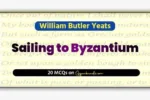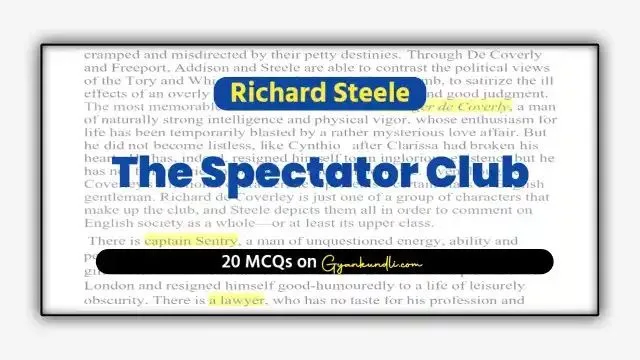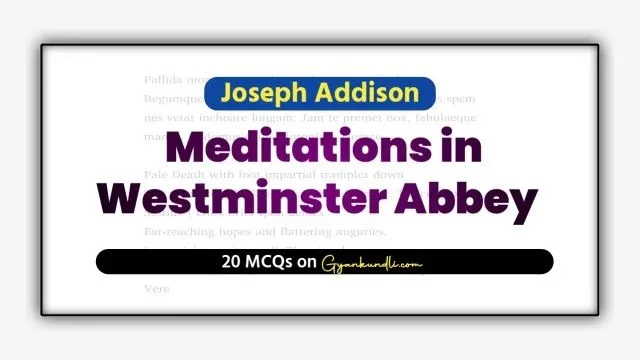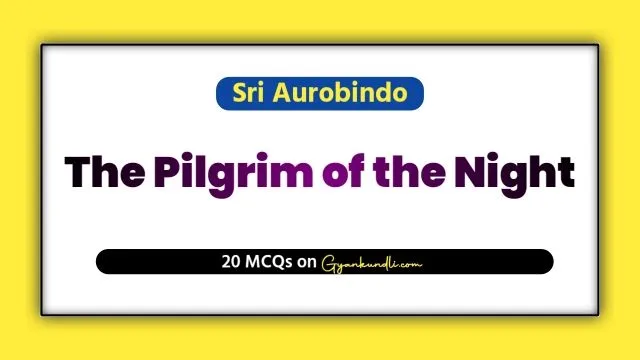Because I Could Not Stop for Death MCQ Quiz : Emily Dickinson’s “Because I Could Not Stop for Death” is one of the most profound meditations on mortality and eternity in English poetry. Written around 1863, the poem presents Death not as a fearful force but as a polite, patient companion. The speaker, a woman, narrates her calm and reflective journey with Death in a carriage, accompanied by Immortality. Through simple imagery and delicate diction, Dickinson transforms the grim subject of death into an experience of serene acceptance.
The poem begins with the striking line—“Because I could not stop for Death – He kindly stopped for me.” Here, Death is personified as a “kindly gentleman” who comes to escort the speaker when she is too busy with life to think of dying. The carriage ride they share symbolizes the soul’s transition from life to the afterlife. This calm journey contrasts with the typical fear associated with death, presenting it as a natural and inevitable phase of existence.
As the carriage moves slowly, the poet observes scenes representing the stages of life: children playing at school (childhood), fields of grain (maturity), and the setting sun (old age and death). These vivid yet tranquil images trace the human journey from innocence to final rest. The setting sun, often a symbol of life’s end, subtly shifts as the poet realizes that it is the sun passing her, signifying her entry into eternity where earthly time has no meaning.
In the later stanzas, the tone becomes more spiritual. The speaker feels the chill of the evening dew, symbolizing the coldness of the grave. The “House” she mentions is not an ordinary dwelling but her burial place—half visible, half buried in the ground. Yet, Dickinson lessens its horror by treating it as a temporary resting place, from which the journey toward immortality continues.
The final stanza beautifully captures the timelessness of eternity. Although centuries have passed since her death, the speaker feels as though it has been only a day. This shows how the boundaries between time and eternity dissolve in the spiritual realm.
Formally, the poem consists of six quatrains written in alternating iambic tetrameter and trimeter, following the ABCB rhyme scheme typical of the ballad form. The rhythmic regularity mirrors the gentle pace of the carriage ride, giving the poem both grace and movement.
Text of Because I Could Not Stop for Death
Because I could not stop for Death –He kindly stopped for me –The Carriage held but just Ourselves –And Immortality.We slowly drove – He knew no hasteAnd I had put awayMy labor and my leisure too,For His Civility –We passed the School, where Children stroveAt Recess – in the Ring –We passed the Fields of Gazing Grain –We passed the Setting Sun –Or rather – He passed Us –The Dews drew quivering and Chill –For only Gossamer, my Gown –My Tippet – only Tulle –We paused before a House that seemedA Swelling of the Ground –The Roof was scarcely visible –The Cornice – in the Ground –Since then – ’tis Centuries – and yetFeels shorter than the DayI first surmised the Horses’ HeadsWere toward Eternity –
Because I Could Not Stop for Death MCQ Quiz
Discover more from Gyankundli
Subscribe to get the latest posts sent to your email.
















